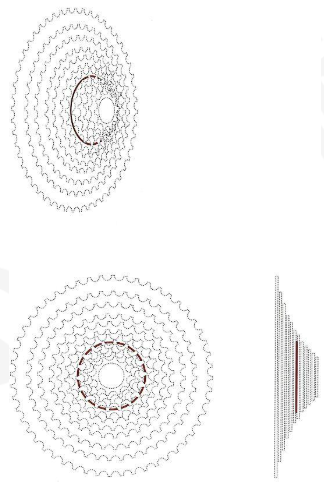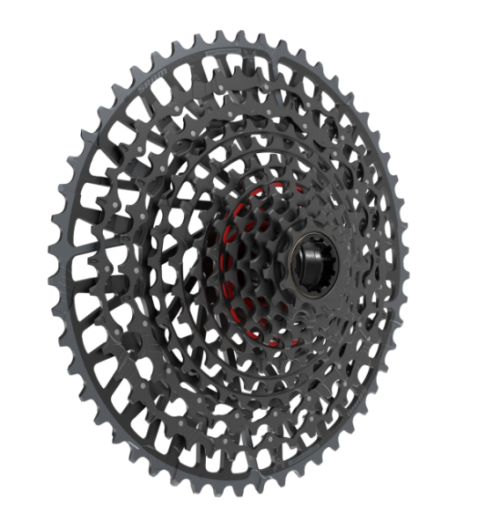Unitalen Representing SRAM Prevailed in the First-instance Trial of the Position Mark Case of "Bicycle Freewheel", Reinforcing the Registrability of "A Single-color Trademark Applied to a Specific Position"
April 29, 2025Recently, Unitalen, representing SRAM, LLC, a world-famous manufacturer of bicycle drivetrain systems and components, prevailed in the case of an administrative dispute against the CNIPA over the review of the refused No. G1729330 "Position Mark of Bicycle Freewheel". The Beijing Intellectual Property Court made a first instance judgment, revoking the decision of review on refusal and ordering the CNIPA to make a new decision. After the well-known "Red Sole" case, the judicial authorities reinforced in this case the registrability rules of the non-traditional "single-color trademark applied to a specific position".
Case Brief
SRAM, LLC was founded in the United States in 1987, specializing in producing bicycle components and developing mountain and road drivetrain systems. It has become one of the world's largest premium bicycle component brands. SRAM, LLC has pioneered the use of a distinctive color with an annular red element and continues to use it as a brand trademark embedded between the sixth and seventh sprockets. The company has also applied to register the "annular red element (Pantone 186) positioned between the sixth and seventh sprockets (gears)" as a trademark in multiple countries and regions worldwide to protect its brand identity.


The design of the disputed trademark The photo of the product
[Note] Description of the disputed trademark: "The trademark claims protection for an annular red element positioned between the sixth and seventh sprockets (gears). The figure shows the position of the red element from different perspectives. Please note that the dotted line in the figure is only used to indicate the position of the element and does not constitute a part of the claimed position mark."
On October 19, 2022, SRAM, LLC applied to the German Patent and Trade Mark Office for Trademark No. 302022116933 ("annular red element positioned between the sixth and seventh sprockets (gears)"), and the trademark was approved for registration in Germany on February 22, 2023. On May 11, 2023, SRAM, LLC, using this trademark as the base trademark, applied to the WIPO for territorial extension to countries and regions such as the European Union and China. On June 19, 2024, the trademark was approved for registration in the European Union. The application and registration processes for the trademark in Germany and the European Union were represented by the well-known German law firm Weickmann & Weickmann Patent und Rechtsanwälte PartmbB, which also provided legal support, such as evidence collection in the case.
On March 26, 2024, the CNIPA determined that the trademark was "a sprocket pattern displayed in three directions, with a red circle positioned between the sixth and seventh sprockets” and rejected the application for territorial extension protection of SRAM, LLC on the grounds of the lack of distinctiveness of the trademark. Dissatisfied with the decision, SRAM, LLC filed an administrative lawsuit with the Beijing Intellectual Property Court.
Court Judgment
The Beijing Intellectual Property Court determined through trial that the examination of an international trademark registration application for territorial extension protection in China should be determined based on the announcement on the trademark by the WIPO. Therefore, the disputed trademark pertained to "a single-color trademark applied to a specific position" and the sprocket pattern represented by the dotted line should not be included in the scope of examination as a constituent element of the disputed trademark. The CNIPA determined that the disputed trademark was "a sprocket pattern displayed in three directions, with a red circle positioned between the sixth and seventh sprockets", which was an incorrect determination of the sign and constituent elements of the disputed trademark. The decision made on this basis lacked an appropriate factual basis and should be revoked in accordance with the law. The CNIPA should make a new determination of whether the disputed trademark has distinctive features based on a correct determination of the sign and constituent elements of the disputed trademark.
Typical Significance
After the "Red Sole" case, the Chinese courts have explicitly reinforced in this case the registrability of "a single-color trademark applied to a specific position" which can be protected as a registered trademark in China. The present case is a new judicial example of the protection of position marks in China. Additionally, through this case, the court has further clarified that, the CNIPA should first accurately determine the sign and constituent elements of the trademark under application and base its determination on whether it has distinctive features on that accurate determination.